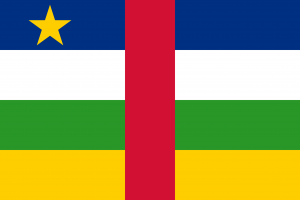Language/Sango/Grammar/How-to-Use-Have
Hi Sango learners! 😊
In this lesson, we will be looking at how to use "have" in Sango. It is important to understand how and when to use "have" in Sango, as it is a key component of the language. Sango is spoken by over 5 million people, mainly in the Central African Republic. To improve your knowledge of Sango, you can also use the Polyglot Club website. Find native speakers and ask them any questions!
What is "Have" in Sango?[edit | edit source]
In Sango, "have" is translated as "kɛ́". It is used to indicate possession of an object or experience. For example, "I have a dog" would be translated as "Ngba kɛ́ nguèlè", where "ngba" is "I" and "nguèlè" means "dog". It can also be used to express actions that occurred in the past, for example, "I have visited Paris" would be translated as "Ngba ésí Paris kɛ́", where "ésí" means "visited".
How to Use "Have" in Present Tense[edit | edit source]
In Sango, to use "have" in present tense, you simply add "kɛ́" after the subject of the sentence. Here are some examples:
| Sango | Pronunciation | English |
|---|---|---|
| Ngba kɛ́ nguèlè | n-gba ke ngu-e-le | I have a dog |
| Mbi kɛ́ mònà | m-bi ke mo-na | They have money |
| Tè kɛ́ bèndè | teh ke ben-deh | You have a bike |
How to Use "Have" in Past Tense[edit | edit source]
To use "have" in past tense, you need to add the verb root "ba" after the subject of the sentence, followed by "kɛ́". Here are some examples:
| Sango | Pronunciation | English |
|---|---|---|
| Ngba ésí Paris kɛ́ | n-gba eh-see Pah-ris keh | I have visited Paris |
| Mbi sàlà ba kɛ́ | m-bi sah-la bah ke | They have worked |
| Tè dǎ ba kɛ́ | the dah bah keh | You have eaten |
Practice Dialogue[edit | edit source]
Person 1: Ngba kɛ́ nguèlè. (I have a dog.)
Person 2: Woow, nguèlè té kò? (Wow, what kind of dog?)
Person 1: Ngua té bàlàkà. (It's a bulldog.)
Conclusion[edit | edit source]
"Have" is an important verb that is used in many everyday conversations. It is useful to understand how to use it properly to be understood better in the language. Remember, practice makes perfect. If you have any questions, please ask them in the comments section below.
Feel free to edit this wiki page if you think it can be improved. 😎
Congratulations on finishing this lesson! Explore these related pages to keep learning: Adjectives & Plurals.
Other Lessons[edit | edit source]
- Pronouns
- Adjectives
- Negation
- Plurals
- How to Use Be
- Questions
- Conditional Mood
- Future Tense
- Give your Opinion
Sources[edit | edit source]
- Sango Grammar - How to Use "Have"
- Sango language - Wikipedia
- AGRAMMAR OF SANGO William J. Samarin, Ph.D. Assistant ...

